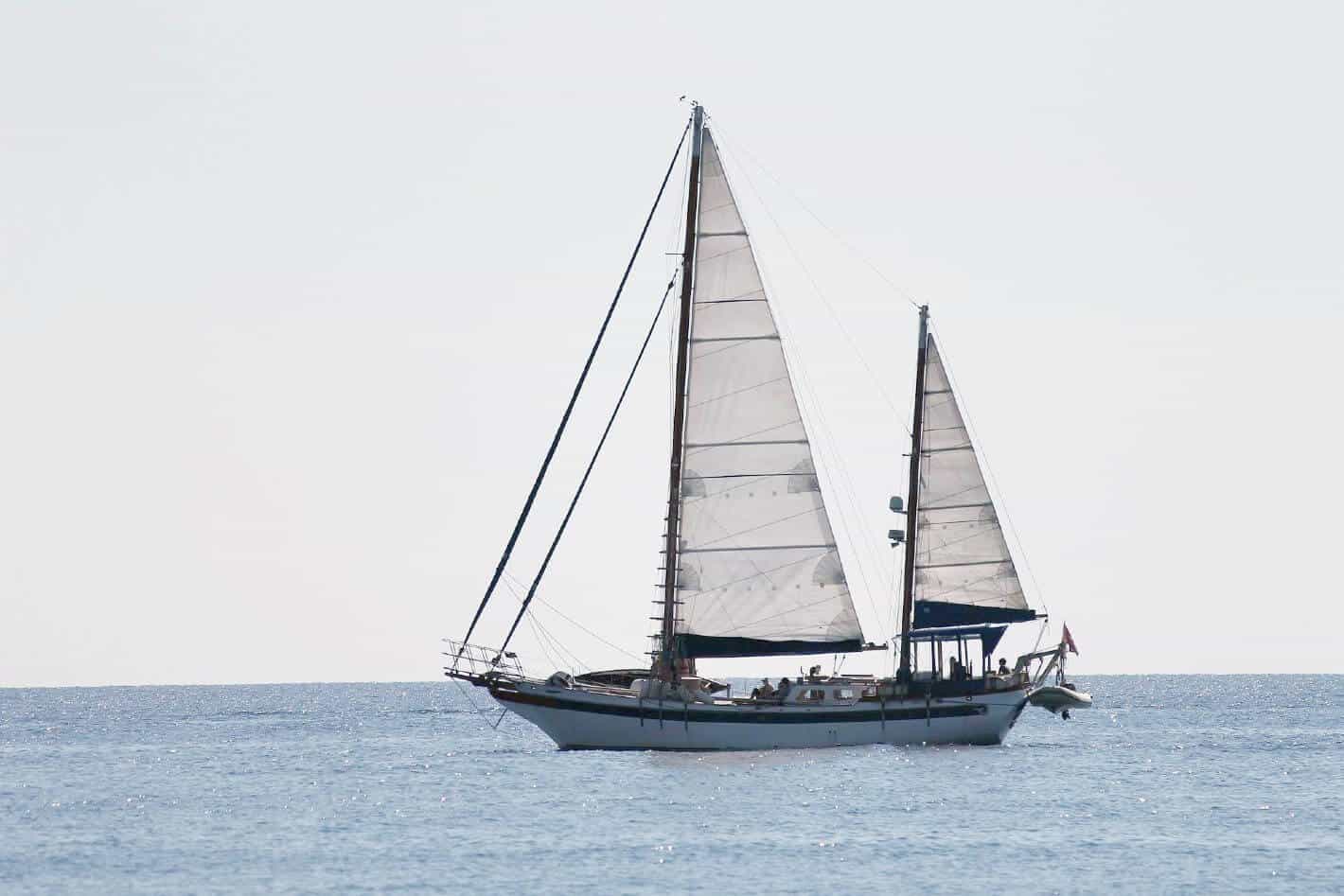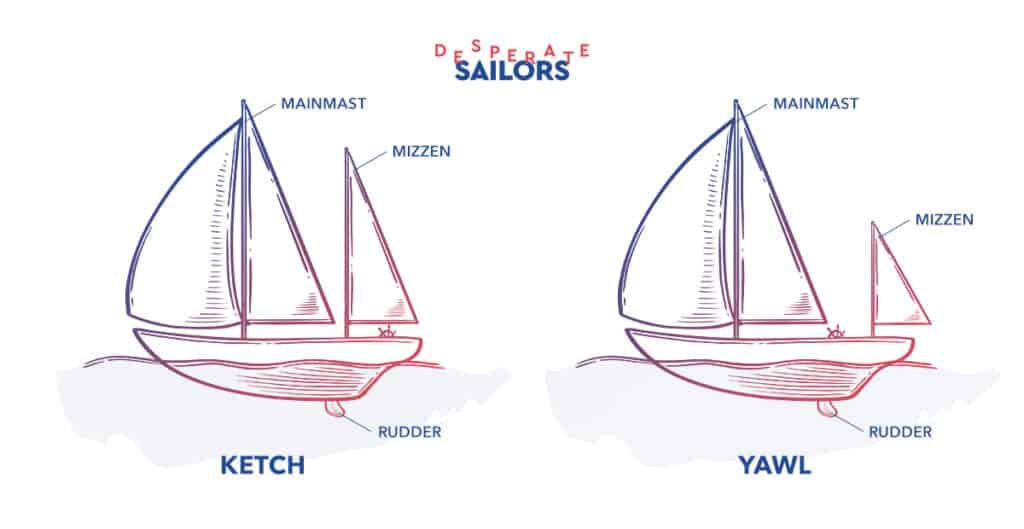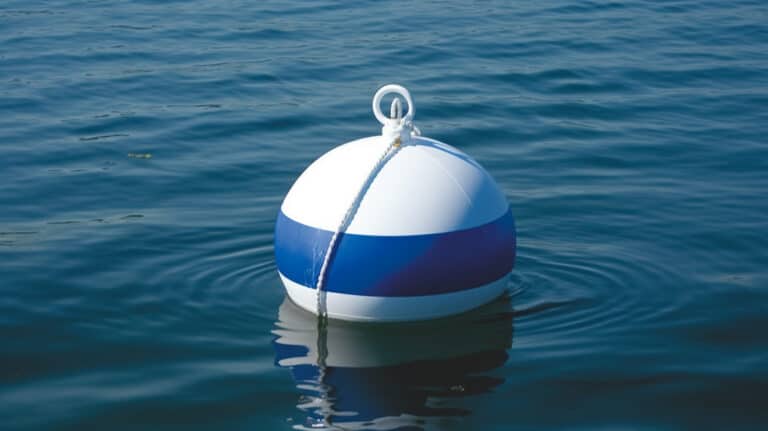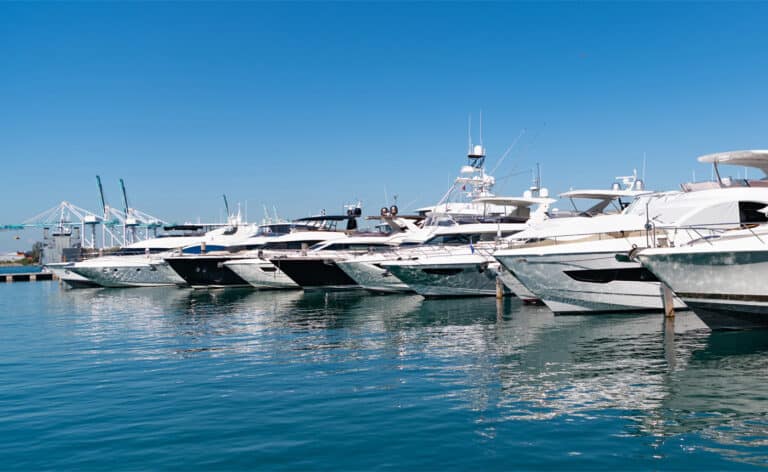When I was a lad, I thought they were all schooners, but they were not. The difference between ketch and yawl (and schooner) is determined by the position of the mizzenmast relative to the rudder pole.
Also, the height of the mizzenmast relative to the mainmast plays an essential role in the definition of ketch, yawl, and schooner.
Ketch vs Yawl vs Schooner
Before we go down to the ketch vs yawl differences, we need to define a schooner, one of the classic sail configurations echoing from the Age of Sail, which is the 1600s.
Well, a schooner is a sailing vessel with multiple masts (more than one) where all masts bear either Bermuda sails, gaff sails, or a combination of those.
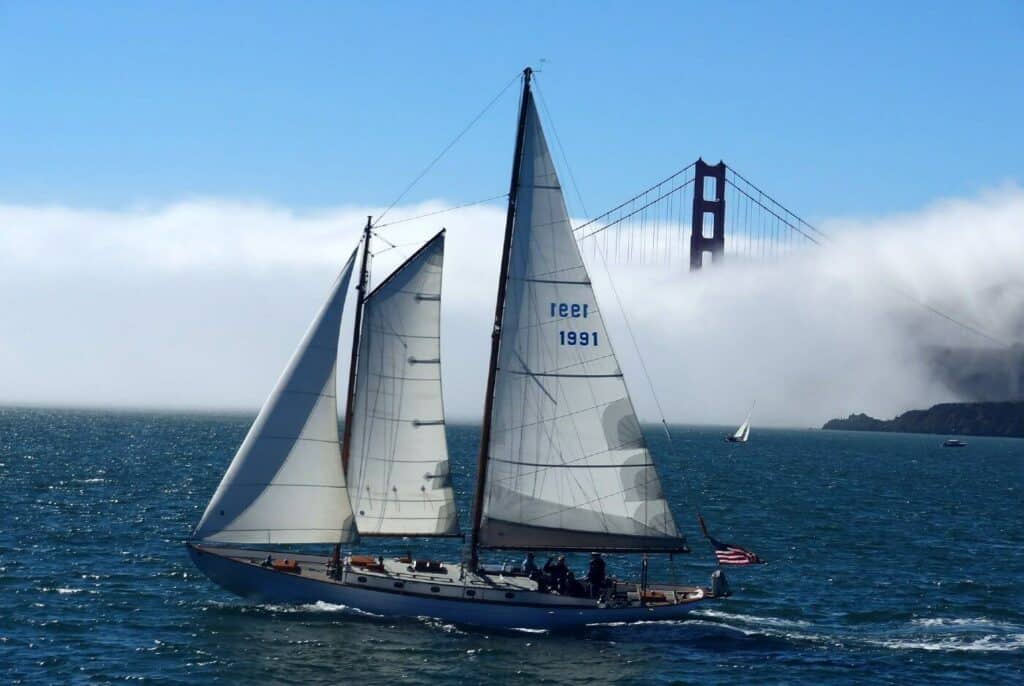
In application to the modern pleasure boats, we speak mainly about two-masted schooners. More importantly, the second mast, which we often call “mizzenmast,” must be the same height or taller as the “mainmast.”
Sometimes (and officially it is so), we call the second mast of a schooner a main mast, as it is taller, but the first one is the foremast then. I see no serious fault in either use of these terms.
The mizzen sail of a schooner can be significantly larger than her main sail or of the same size.
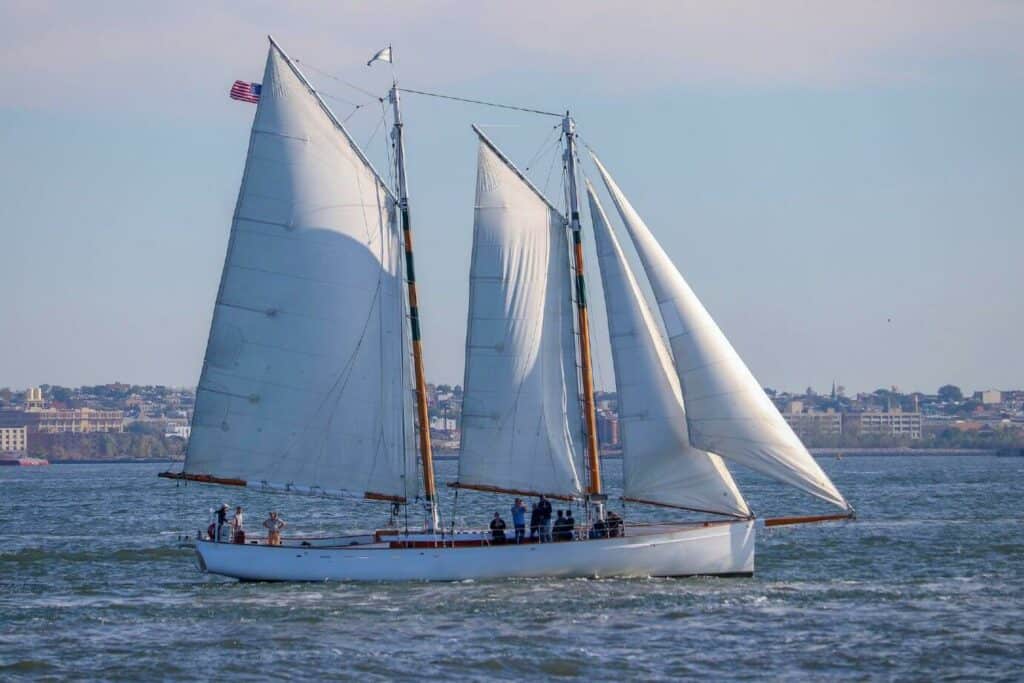
Schooners are usually larger boats, tall ships, and super-yachts. We can hardly spot a 25-foot schooner, but they are commonly 50-60 feet and up. Honestly, we can hardly spot a schooner as a pleasure boat at all unless she is a super-yacht or a historical vessel.
Schooners may feature a staysail or a few between the masts, along with or instead of the main sail. Ketches do so as well, while yawls do not.
Ketch Sailboat
Once the mizzenmast of the two-masted schooner-alike is shorter than the mainmast, she is a ketch. Yet another cardinal condition to define the ketch vs yawl difference is that for a sailboat to be a ketch, the mizzenmast should be located before the rudder pole (otherwise, she is a yawl).
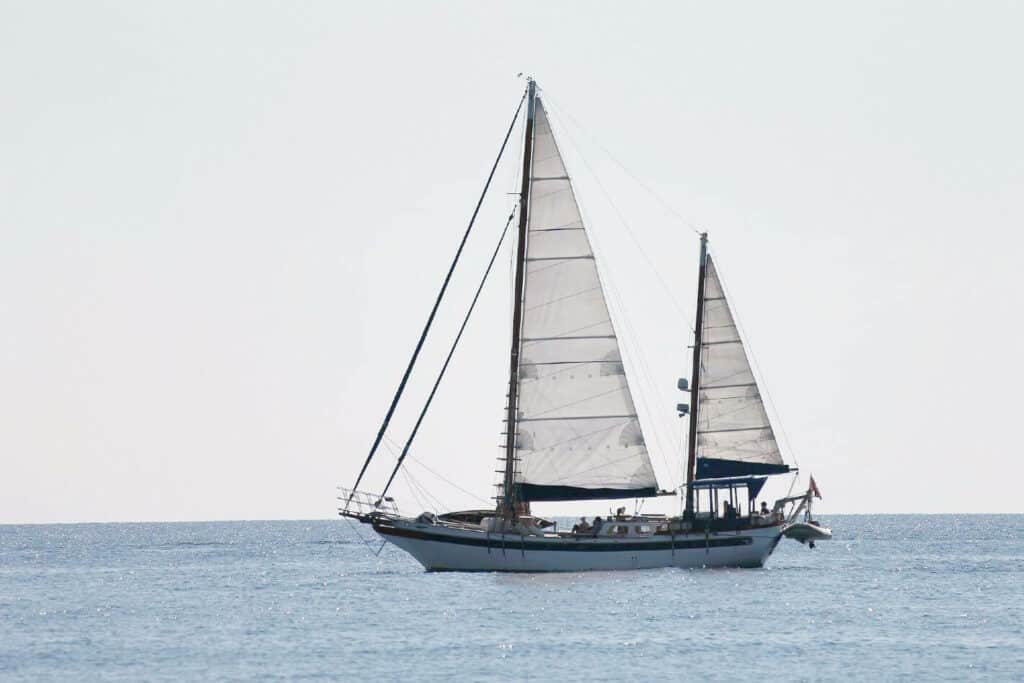
A ketch with two or more jibs is called a cutter ketch (in the picture above). Bigger ketches may carry triangle staysails between the masts, like for going downwind, which is not the case for a yawl due to the distance between the masts, and the mizzenmast being too small.
Modern ketches can bear gaff sails or a combination of a gaff sail and a Bermuda sail, but the latter we meet pretty seldom. Ketches way more often implement Bermuda sails on both masts.
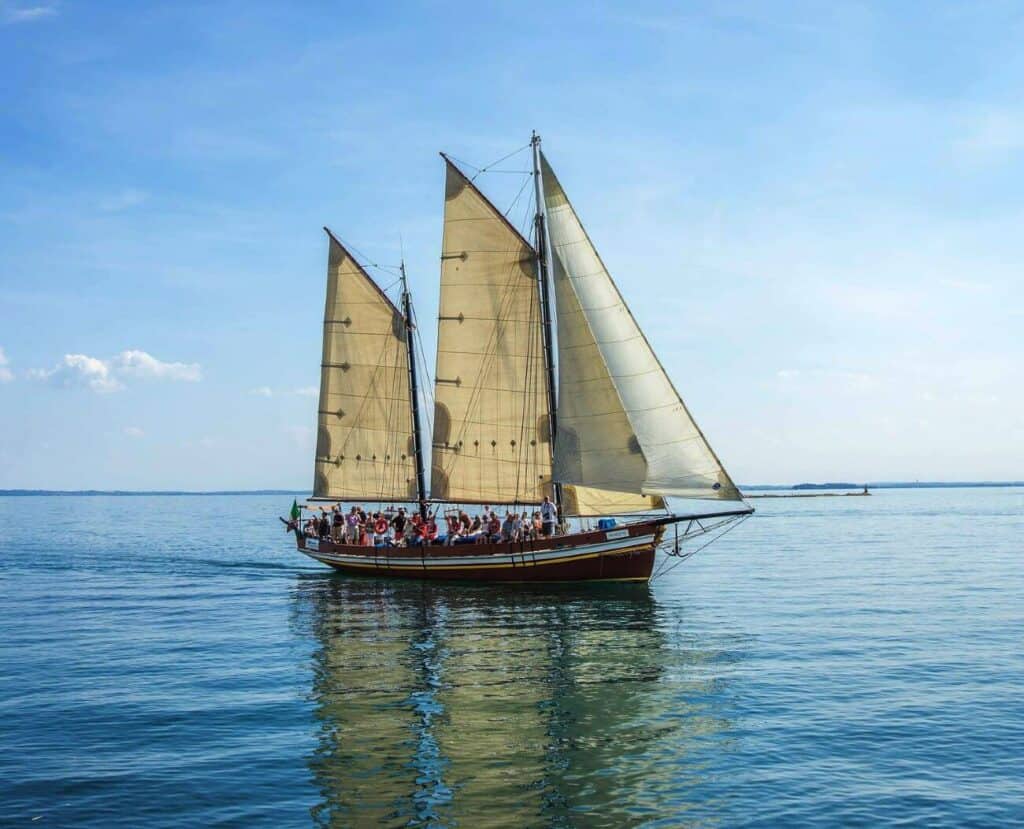
Because the sail area of a ketch is split into two parts, the masts of a ketch are shorter than the single mast of a sloop, giving more clearance to pass under the bridges, and decreasing the load given on each mast, sails themselves, standing rig, and running rig too.
Ketches are widely recognized as way stable boats when in rough water and strong winds compared to sloops; this makes them idyllic for off-shore cruising. For day-sailing, you can use just one sail and jibs. That makes ketches very versatile sailboats, as you choose the best sail configuration for today’s voyage out of several options.
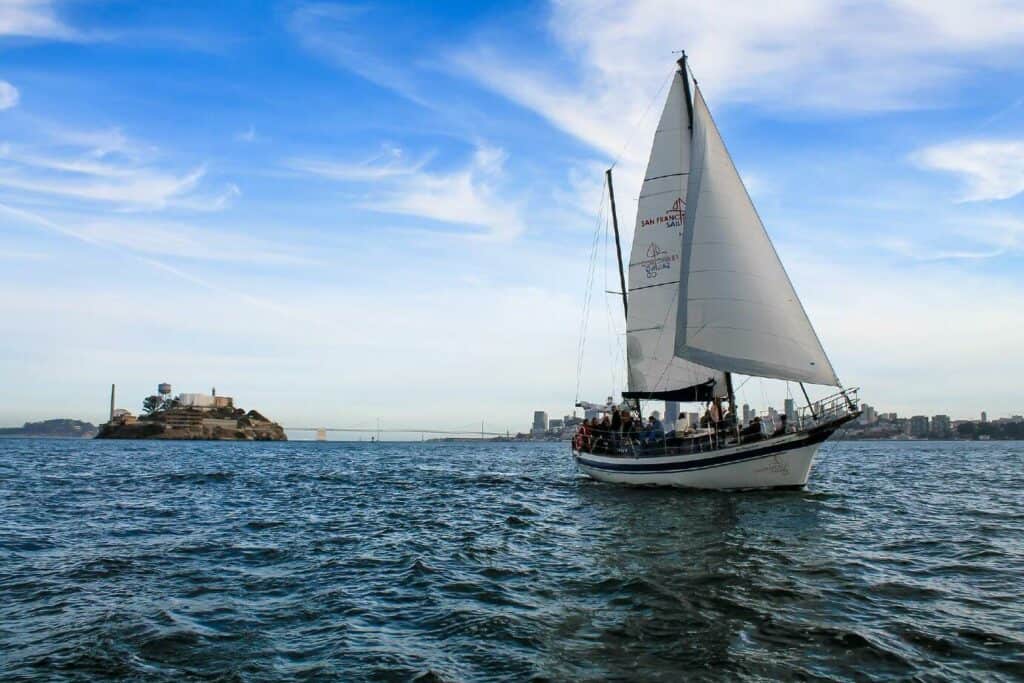
The complexity of control is a subjective con as well, real ketch-owners never report. The mizzen is smaller anyway than the genny and the main.
Nobody forces you to use all sails at once, but you have a wider range of options. Shorter masts and smaller sails are easier to handle once you sail single-handed. Logically, for a cruising couple, a ketch is simply the best sailboat.
There are no brand-new ketches in the market to buy one straight away from the manufacturer. For the mass market, boatyards prefer making sloops, but for having a brand-new ketch, you need a custom build. The same is about yawls, by the way.
And, we have found yet another beautiful pro for ketches somewhere in sailing forums: a ketch appears like a real ship rather than a sloop-ish big dinghy (ha-ha).
Boaters who tried a ketch do never go back to sloops. If you meet one, please let us know.
Yawl Sailboat
The mizzenmast of a yawl is located far abaft the rudder pole. The mizzenmast of a yawl is usually very small, even tiny, standing far abaft. Actually, it is significantly smaller than one on a ketch – the main and the principal difference between a ketch and yawl.
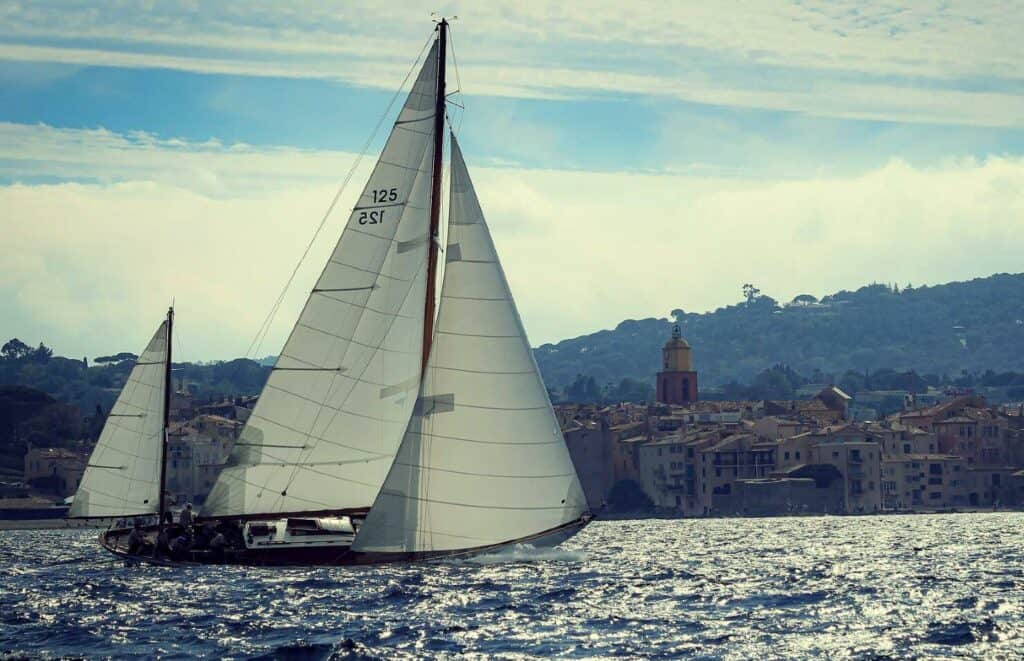
Yawl owners report they never want anything but yawl anymore, just like ketch owners do about their ketches. Many sloop owners, however, think about a ketch or a yawl as their next boat. True.
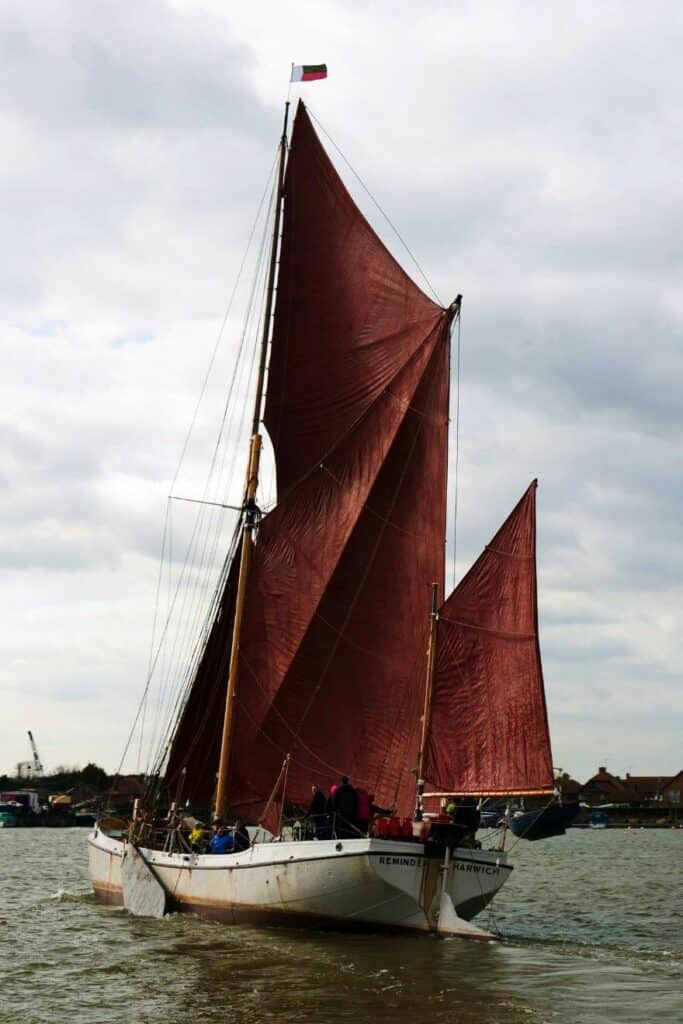
Yawls are as stable as ketches on the go, but you’ll meet different physics and behavior once you sail it because the wind force applies behind the rudder. Somewhat a rare-wheel-drive if you wish. Nobody calls sailboats “something wheel drive,” but we want to hint at an idea about how to sail a yawl.
Just because the yawl’s mizzen sail is behind the rudder, it can be used as a wind rudder. Many yawl owners find it way useful, as it adds a ton to stability, including but not limited to the downwind.
Some yawl owners say they also use the second sail as a stabilizer when anchoring, which you can hardly do safely with any bigger sail. I’m unsure if this even counts anything like a serious pro, but some people report they love it.
The mizzenmast standing at the very aft may sometimes complicate the installation of the wind-wane or a solar panel at the aft. Maybe a reason why yawls are, in general, smaller boats than ketches, and the former fit less for off-shore cruising (please don’t shoot at me).
Ketch vs Yawl – The Bottom Line
Many boaters we have interviewed about ketch vs yawl say, “I love ketch/yawl because she is just more beautiful than my counterpart.” If you ask me, my dream boat is a ketch sailboat with a heavy steel hull, most probably a cutter of about 40-45 feet LOA.
The stability of yawls and ketches is pretty the same, if I may. They are not really “ketch vs yawl”; there’s not much space for being “versus,” but we think both are generally better than a sloop.
Both ketch and yawl perform amazingly in strong winds, having an option to run with the mizzen and the jib on, downing the main (the combo is called Jib and Jigger).
Both ketch and yawl are cooler downwind compared to a sloop, but the letter wins the upwind performance. That is why we do not see ketches nor yawls racing.
There are so many reports of how the two-masted yachts (ketches and yawls) perform in rough weather. They are just made for this, as the wind force is spread, giving less load upon each mast and the rig, and then smaller sails serve longer and are easier to handle.
So, finding out the difference between ketch and yawl, I asked my teacher a long time ago: what was the best rig for the rough waters and heavy winds? He replied: A submarine.
